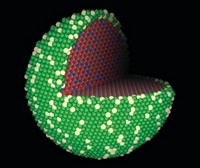Advertisement
Grab your lab coat. Let's get started
Welcome!
Welcome!
Create an account below to get 6 C&EN articles per month, receive newsletters and more - all free.
It seems this is your first time logging in online. Please enter the following information to continue.
As an ACS member you automatically get access to this site. All we need is few more details to create your reading experience.
Not you? Sign in with a different account.
Not you? Sign in with a different account.
ERROR 1
ERROR 1
ERROR 2
ERROR 2
ERROR 2
ERROR 2
ERROR 2
Password and Confirm password must match.
If you have an ACS member number, please enter it here so we can link this account to your membership. (optional)
ERROR 2
ACS values your privacy. By submitting your information, you are gaining access to C&EN and subscribing to our weekly newsletter. We use the information you provide to make your reading experience better, and we will never sell your data to third party members.
Materials
Facile route to metal oxide nanoparticles
January 16, 2006
| A version of this story appeared in
Volume 84, Issue 3
Metal oxide nanoparticles have been grown with the help of dendritic polymer scaffolds for the first time using a technique developed by Bradley D. Fahlman's group at Central Michigan University (J. Am. Chem. Soc. 2006, 128, 420). Dendrimers have been used in the past to grow metal nanoparticles, but Fahlman points out that metal oxide nanoparticles "are of even greater use for sensors, catalysis, and microelectronics applications." To create SnO2 nanoparticles, Fahlman and his coworkers mixed sodium stannate with fourth-generation dendrimers of either poly(amidoamine) or poly(propyleneimine). They then bubbled CO2 into the aqueous or ethanolic solutions, and particles with a diameter of 3 nm formed within 30 minutes. Fahlman notes that, unlike other metal oxide nanoparticle syntheses, his lab's procedure doesn't require elevated temperatures or involve moisture-sensitive reagents. The researchers also found that substituting cheaper hyperbranched poly(ethyleneimine) polymers for the costly dendrimers yields similar results.



Join the conversation
Contact the reporter
Submit a Letter to the Editor for publication
Engage with us on Twitter